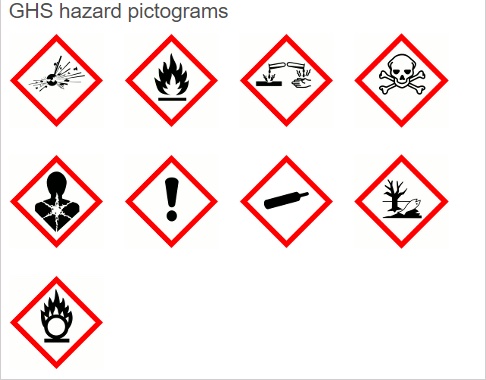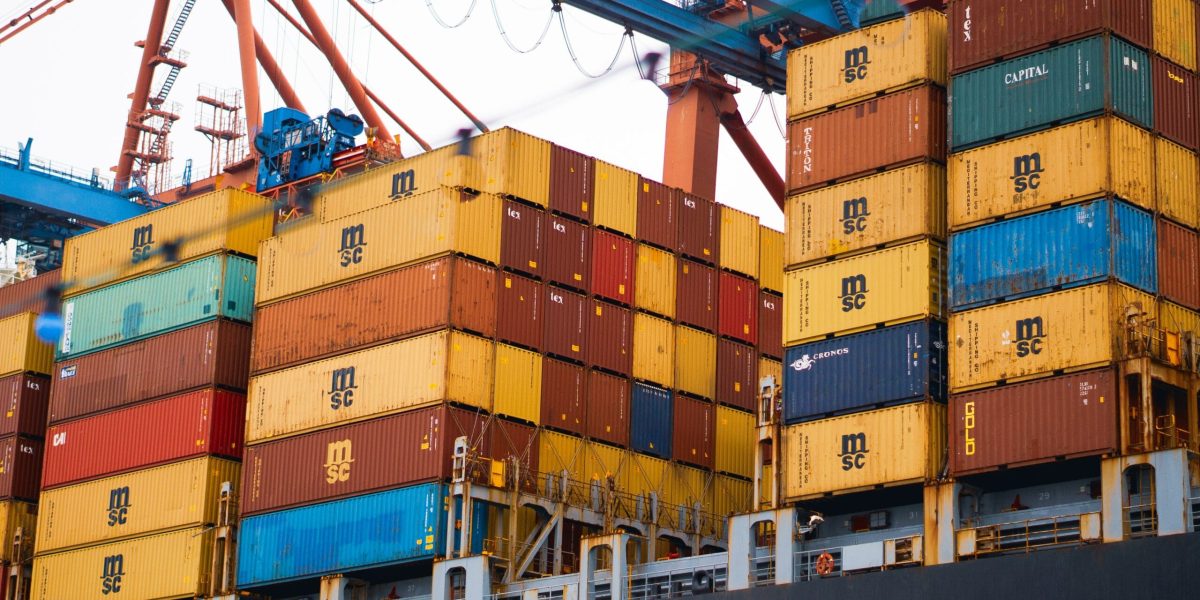Dangerous goods may be pure chemicals, mixtures of substances, manufactured products or articles that pose a risk if not handled correctly during transportation. The transport of dangerous goods is regulated in order to prevent, as far as possible, accidents and damage to the following:

Each mode of transport, (air, sea, road, rail and inland waterway) has its own regulations. The UN sub-committees for each mode have identified which articles and substances they are willing to transport safely and security. Helping them to mitigate their level or risk to people, property and their environmental impact.
How do I recognise Dangerous Goods?
Many products which we encounter on a daily basis can be hazardous to our health if we come into contact with them too often or for too long. If you look under your kitchen sink there are many articles that may cause us harm. The UN put together the Global Harmonised Symbols to help us identify articles and substances that may be considered harmful or dangerous for transport.

These symbols only relate to the hazards to consumers when using a product and does not automatically mean that it is dangerous in transport.
However, it acts as a red flag to get us thinking about when the the article or substance may react during the normal conditions of transport.
The normal conditions of transport are:
- Vibrations
- Humidity
- Changes in Temperature
- Changes in Pressure
9 Hazard Classes of Dangerous Goods
Articles and substances are segregated into one of nine hazard categories.
| 1. Explosives | 2. Gases (Flammable, Non-Flammable & Toxic) |
| 3. Flammable Liquid | 4. Flammable Solids |
| 5. Oxidizers | 6. Toxic or Infectious Substances |
| 7. Radioactive | 8. Corrosives |
| 9. Miscellaneous (Lithium Batteries) |
Each article and substance is given a Proper Shipping Name and a UN Number so that it can be recognised globally as a hazard.
To confirm if your article or substance may be dangerous we have to refer to the manufacturers safety data sheet. Section 14 Transportation.
Here is an example, there will be an identifier for each mode of transport. If your safety data sheet displays a UN – you must follow the regulations for transporting the article or substance. If you are not trained on dangerous goods, talk to a dangerous goods safety adviser.
Section 14 Transport Information
| UN Number | 3481 |
| Proper Shipping Name | Lithium Ion Batteries Contained in Equipment |
| Transport Hazard Classes | 9 |
| Marine Pollutant | No |
| Transport in Bulk (According to Annex II of Marpol 73178 and IBC code) | No Information |
| Special Precautions |
What happens if I ship those goods?
If articles or substances are shipped without having the hazard declared this is called Undeclared Dangerous Goods. This opens your organisation up to penalties and for continued shipments a journey through the court system for larger penalties and potential custodial sentences.
Current fines are unlimited in the UK but a good indicator for an initial fine is below
– £5000 if the shipment has not boarded a flight
– $25,000 per container
Of course if there has been an incident involving your goods, you may have to pay for the repair of the property (truck, aircraft or cargo vessel), the environmental clean up, cover the cost of the damage to others.
Not to mention the long term damage to your business reputation, the cost can run into millions.
Do you need help with handling Dangerous Goods?
Fixing problems with transporting dangerous goods before an incident or penalty situation is much easier.
Find a good Dangerous Goods Safety Adviser (DGSA) that covers all modes of transport to give you solid advice.
1. Start with an online Dangerous Goods Awareness training to help you make some decisions.
2. Identify a dangerous goods packaging company that can safely pack, mark and label your goods to meet regulation standards.
3. If you want to do this internally, identify key members of staff that need to trained on how to safely transport dangerous goods by selecting the right training coursesfor your organisation
4. Build solid work process and instructions around the handling of dangerous goods.
5. Have a process to continually improve and ensure that you remain compliant and up to date with regulation changes.
Contact us to discuss your Dangerous Goods requirments on 0330 912 5041 or Contact Us via email

